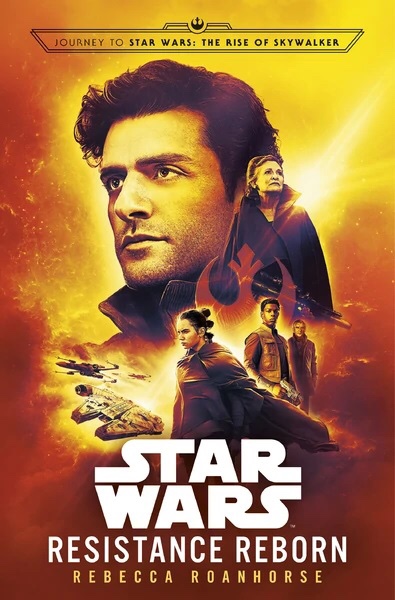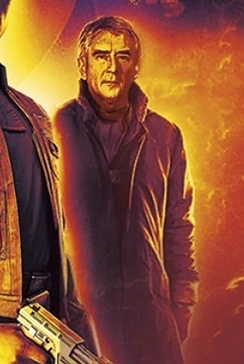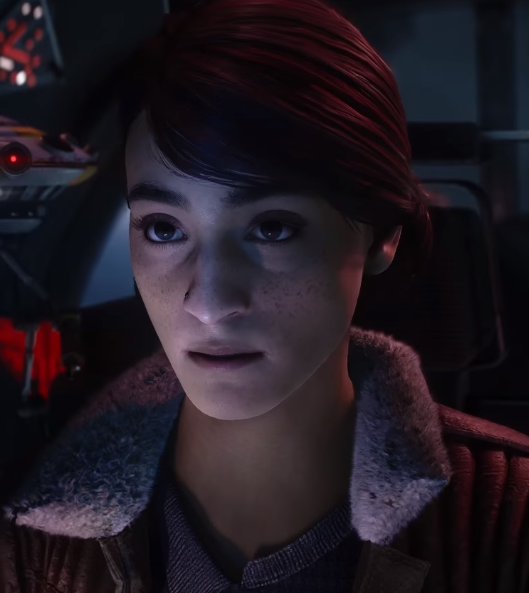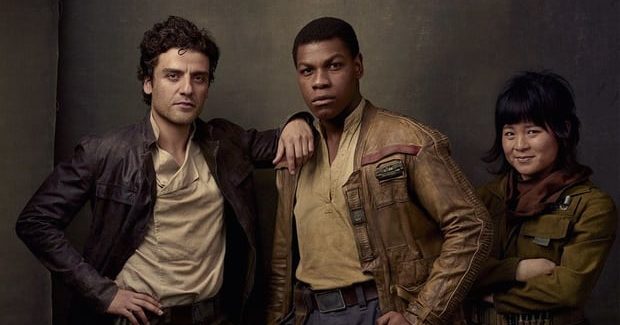
Spoiler Warning: This review will mention characters announced in previously-released official excerpts and briefly mention things about them. I won’t reveal any surprises or unannounced characters – but calibrate your spoiler tolerance accordingly.
Rebecca Roanhorse has accomplished a great feat with Resistance Reborn. She’s taken a book with an ensemble cast – seriously, quite a huge cast – and given each character a personal touch. Characters show up from previous Star Wars canon books, comics, and video games but in a way that doesn’t feel shoe-horned or gimmicky. That’s very hard. Star Wars doesn’t have the best record with that, though sometimes it works really well. Resistance Reborn is one of those times.
Roanhorse has described the book as “bringing the squad back together” and that’s essentially what it does. But somehow Roanhorse manages to juggle this large cast of characters while making all of them feel vital to the story, and getting them all just right. It’s one thing to get film characters like Finn, Poe, and Rey right (and honestly – they’re not even that easy to get right), it’s another thing to take characters seen only on the page or in games and channel them in a way that feels authentic to the way their original creators wrote them. But while Resistance Reborn is a love letter to characters we’ve grown fond of in other places, it’s also a great character study in how these characters handle adversity.
It’s perhaps an understatement to say that the events of The Last Jedi were traumatic for our main characters, and impactful on the galaxy as a whole. There were deep, personal struggles for Leia, Rey, Finn, Poe, Rose, and for the Resistance itself. When the movie finished with the First Order in seeming victory and the Resistance reduced to a handful of people who could fit onto the Millennium Falcon, many of us wondered – what could possibly be next? Leia said that “we have everything we need”, and Resistance Reborn is the exploration of what that really means. It engages with characters on a personal level – from the main characters I just mentioned to new characters we haven’t met yet. How does the galaxy deal with the First Order’s triumph? What happens to the worlds of the Republic?
There’s some ugliness involved, and some beauty too. Above all, growth. That’s what makes Resistance Reborn a great read. It’s about people and their character. About collaboration with evil and persisting despite of it.
Casting Wide
There are a lot of characters in this book, and they show up from basically everywhere. Characters appear from Aftermath, Battlefront II, Poe Dameron, and a few other places I won’t spoil. It can be easy for character appearances to feel self-referential, empty, or token – but they don’t feel like that in Resistance Reborn. There are a couple reasons for this, not least of which is that the story is very much about building the Resistance back up from its absolute nadir at the end of The Last Jedi. It just seems natural that we’d see some old faces again, along with some new ones.

The other thing, though, is that the characters are well-written. Sometimes it can be tough to get another author’s character right, but Roanhorse manages to do so with a remarkable degree of flexibility and authenticity. Let’s start with the big one for me – Wedge Antilles. The guy is sort of a mascot for some Star Wars books fans – he appeared in every Star Wars original trilogy film and he was the everyman commander of Rogue and Wraith Squadrons in the EU’s old X-Wing series. He’s quite beloved, and his last post-Return of the Jedi appearance in the new canon was the Aftermath trilogy.
Suffice it to say that Wedge feels exactly right. To be clear, he feels exactly right for a character with the story and experiences that Wedge has had in the canon. He’s not the New Republic general of Legends – he’s a version of Wedge that actually did get to retire early because the war ended early. EU Wedge often wondered what would have happened if he’d retired and focused on peacetime affairs instead of spending his life at war: well, that’s the Wedge we get in this story. He still feels like Wedge: he’s got the humble yet dutiful personality we all know and love, he’s just been through different things. And I’ll tell you: Roanhorse gives us a great feel for what it’s like to be Wedge in this time and place.

Another favorite example? Zay (Meeko) Versio and Shriv Suurgav from Battlefront II. We only know these characters through video game gameplay, and Zay in particular has limited screentime in a DLC campaign for the game. We never got inside their heads in novels, but Roanhorse writes them as if we did. Zay is wonderfully right: she’s her parents’ daughter and has some of the best lines in the entire book, but Roanhorse also recognizes that she’s a teenager at war and this isn’t normal. Star Wars is full of young protagonists (it’s in the series’s DNA) but it’s nice to see a human acknowledgement of how rough that is. And Shriv? What can I say about that particular Duros? He’s quite the character and while he’s known for being sarcastic and cynical, he’s also a person – and we get a great sense of the humanity (Durosity?) behind the quips. Their scenes are among the most touching in the entire book. I’m so glad we got to see these characters again – and I hope it’s not the last time.
Consequences of The Last Jedi
What about the movie characters? We see them too – and we get a follow-up on the events of The Last Jedi that we might not get in The Rise of Skywalker, given the time-skip involved. The novel starts with Leia, and we really get a look at a Leia that’s been through a lot – who’s tired but is going to keep going and give it her all. It’s inspiring and worrying at the same time. I don’t know what’s going to happen to Leia in the final film, and my concern for her is inextricable with the devastating sadness losing Carrie Fisher still brings to mind – and I really feel like the novel was written with a sensitivity to that.
Finn and Poe are great in this novel. They went through some rough times in The Last Jedi, and the book doesn’t paper over them. Finn feels really authentic and there are some great comedic moments with him, but also sadness as his stolen childhood and First Order upbringing are never far from the narrative. Finn is a character who deeply feels friendship, and there is a great scene where we explore what friendship means for Finn. And Poe? It might be fair to say he’s one of the primary protagonists of the story, and the story does NOT shy away from the consequences of Poe’s mutiny in the last film. Neither does Poe himself. It’s fair to say the sequence was divisive in the film – as it was divisive inside the Star Wars universe too – but the ramifications and consequences are handled superbly here.

Rey appears a little less in this novel. She’s ever-present, but she’s also quiet and in the background. Part of it is that we still don’t know a lot about her after two films, but neither do the characters in the story. Rey keeping to the background isn’t out of a fear of using her – it feels natural to her character. She steps up when it’s important, but doesn’t really want to be the center of attention. Rey seems like a character who’d be difficult to write, given how hard she is to read. She seems deceptively simple but she’s more complicated than that – and it looks like Roanhorse got her right too. I’m saying that a lot, but it’s true – even from the very first excerpt released of the book, Rey’s dialogue (we never do get in her head in this book) was on point.
And then there’s Rose. She’s not one of the primary characters of the novel, but Resistance Reborn did not forget Rose. Rose is as passionate and excited as she was in the film – the tone is exactly right. I wish we could’ve seen more of her given how well Roanhorse wrote her appearances, but the price for fitting so many characters into a single story is that they can’t all be the main focus. Either way, I’m happy that Rose is here.
Oh, and I’m not focusing on the original characters but I wanted to give a shoutout to former Imperial warlord Teza Nasz. She’s not the kind of aristocratic Imperial character I really enjoy, but she surprised me. That’s all I’m going to say about that, since I promised to be light on spoilers.
But wait – what about the galactic politics?
Just as a post-TLJ Star Wars novel couldn’t possibly ignore the galactic politics of the First Order’s near-complete-victory, I can’t ignore space politics either. In addition to great work with general characterization, Roanhorse also did a great job showing the political consequences of the Resistance’s devastating losses.
We see the impact of the First Order’s wins on the strain it causes the main characters, and it features heavily in the titular “rebirth” of the Resistance as it occurs in the story. We see characters cope with a sense of defeat and see them forced to deal with it. They can’t hide from it – but they don’t try to. It’s a brutally honest take that still manages to be hopeful.
Part of the action of this novel takes place on Corellia, where three original characters emerged to become surprising favorites of mine. Roanhorse gets into the banality of evil, and I love that stuff. We see what it’s like for a small person to collaborate with evil to try to feel big. We see what it’s like for creeping fascism to step in and turn people who believe themselves good into quite ordinary monsters. We see that appearance doesn’t dictate good character. And there’s some brutally honest parts about how much evil people are willing to put up with if they keep their heads down, eyes closed, and ears shut. If you feel a little uncomfortable reading it, and if it reminds you a bit too much of your reality – that’s probably a good thing.
Normally I would’ve written a whole article on the politics, collaborating with fascism, and the banality of evil. I’ve done it before because I love that subject. But somehow that manages to be part of a much larger story about characters and people. Because ultimately, even with this book’s huge cast, that’s what the story is about – it’s about people and their responses to trauma and evil. It’s not a long book. It clocks in at about 300 pages or so in the hardcover. But it covers a lot of ground and has a lot of heart, and it’s brutally honest too. Resistance Reborn is a great read and probably a new addition to my favorite Star Wars books list.
